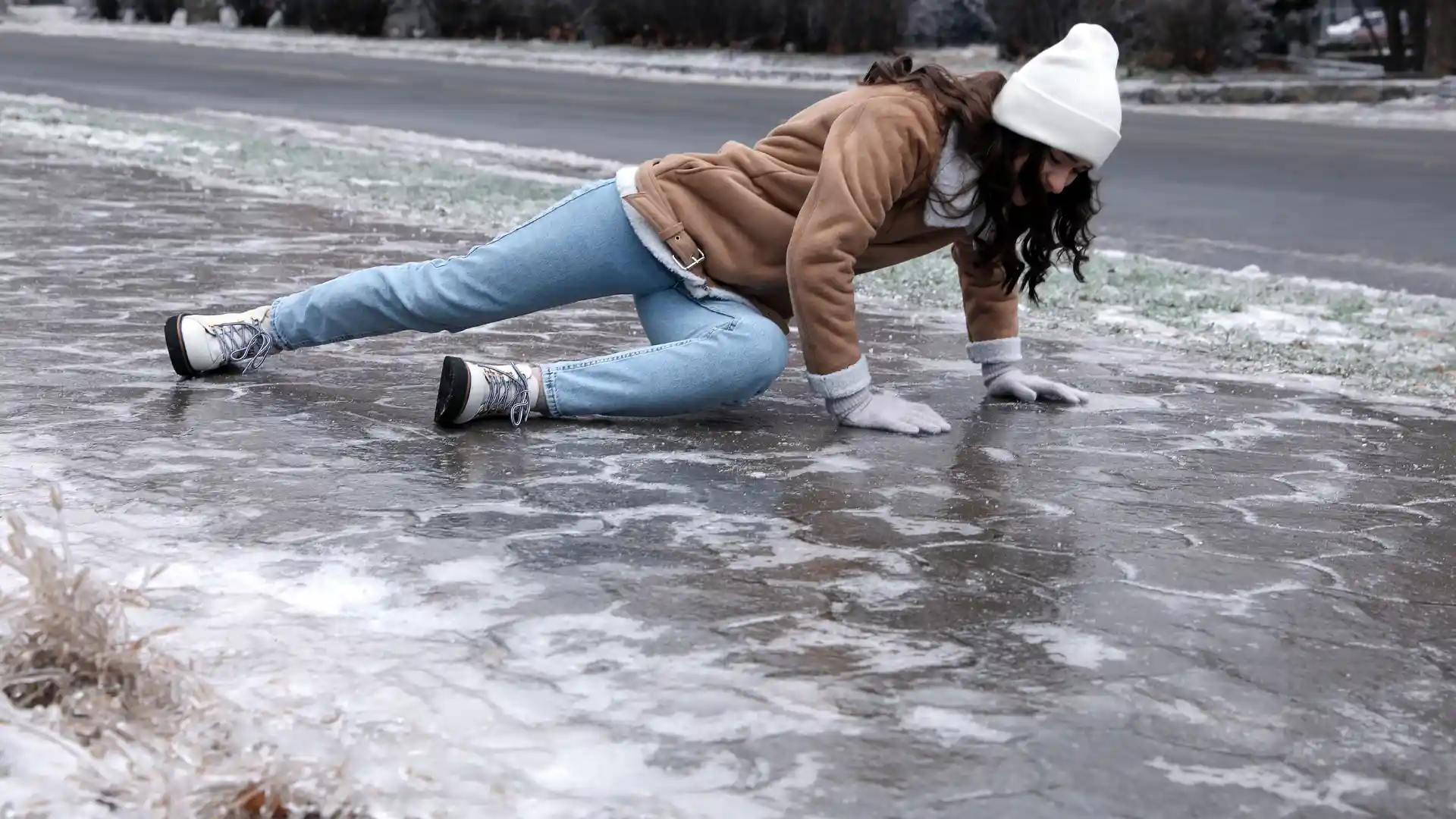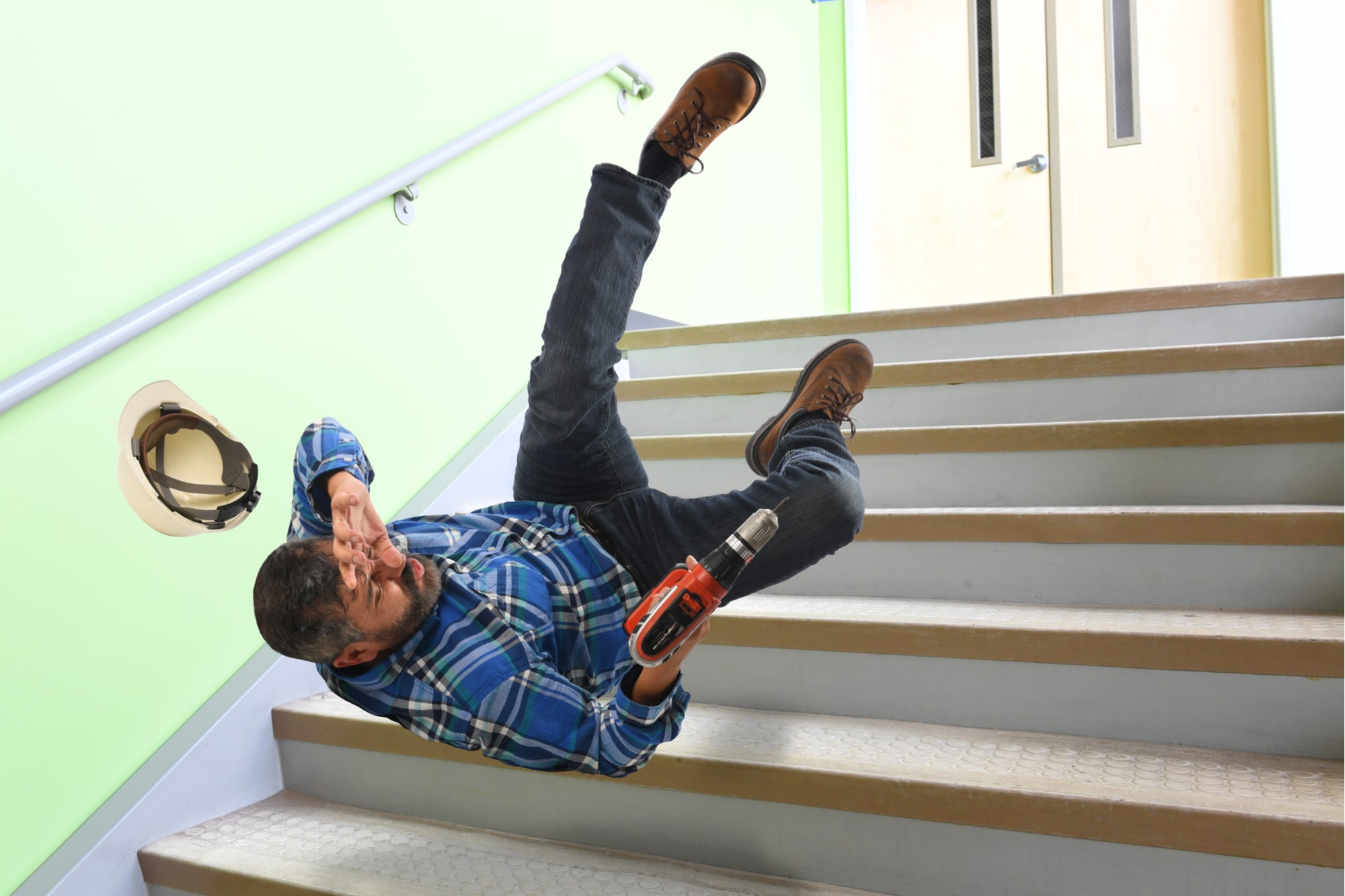Common Places Slip and Fall Accidents Occur and Who’s Responsible is a critical area impacting individuals and businesses alike. Understanding where these accidents most frequently happen—from bustling grocery stores to uneven sidewalks—is crucial. Equally important is determining liability when such incidents occur, examining the responsibilities of both property owners and the individuals involved. This exploration delves into the legal aspects, safety measures, and preventative strategies to mitigate the risk of slip and fall accidents.
This analysis will cover various locations prone to slip and fall accidents, including detailed examination of hazards in specific settings like grocery stores and the challenges presented by outdoor spaces. We will explore the legal responsibilities of property owners in maintaining safe premises and how this concept of “reasonable care” plays out in court. Further, we’ll investigate individual responsibility and contributing factors, emphasizing the importance of situational awareness and preventative measures.
Finally, case studies will illustrate the complexities of determining liability in real-world scenarios.
Responsibility in Slip and Fall Accidents

Slip and fall accidents, while sometimes unavoidable, often involve a degree of individual responsibility. Understanding the factors that contribute to these accidents is crucial for both preventing them and determining liability in the event of injury. This section will explore the role individuals play in slip and fall incidents.
Slip and fall accidents frequently happen in areas like kitchens, bathrooms, and hallways, often due to negligence. Determining responsibility hinges on proving a property owner’s failure to maintain a safe environment. If you’ve suffered a workplace injury from a slip and fall, understanding your potential compensation is crucial; find out more by checking How Much Compensation Can You Get for Workplace Injuries.
This knowledge helps you navigate the process of claiming what you’re rightfully owed after such an incident. Ultimately, preventing these accidents requires proactive safety measures from property owners and employers.
Factors Contributing to Individual Responsibility in Slip and Falls
Individual responsibility in slip and fall accidents stems from a combination of factors, primarily negligence or a failure to observe potential hazards. Understanding these factors is key to promoting safer behavior and reducing the likelihood of accidents.
Common slip and fall accident locations include wet floors, uneven pavements, and poorly lit areas. Determining responsibility often hinges on proving negligence, which is especially crucial in workplaces. For instance, understanding how to establish employer liability is key, as detailed in this helpful resource on Employer Negligence: Proving Fault in Workplace Accidents. Ultimately, establishing who is responsible for a slip and fall depends on the specific circumstances and evidence of negligence.
- Failure to observe surroundings: Not paying attention to where one is walking, especially in potentially hazardous areas like construction sites or poorly lit spaces, significantly increases the risk of a slip and fall.
- Distraction: Engaging in activities that divert attention from the walking surface, such as texting while walking or talking on a phone, can lead to accidents.
- Inadequate footwear: Wearing inappropriate footwear, such as high heels or worn-out soles, reduces traction and increases the risk of slipping.
- Ignoring warning signs: Disregarding caution signs indicating wet floors, slippery surfaces, or construction zones demonstrates a lack of due care and contributes to accidents.
- Intoxication: Impaired judgment and coordination due to alcohol or drug use significantly increase the risk of falling.
- Running or rushing: Moving quickly through an area reduces reaction time and control, making it harder to avoid hazards.
Examples of Individual Actions Contributing to Slip and Fall Accidents
Several scenarios illustrate how individual actions directly contribute to slip and fall accidents and impact liability. For instance, if someone is texting while walking and falls on a clearly marked wet floor, their negligence in not paying attention to their surroundings might significantly reduce their ability to claim against the property owner. Conversely, if someone slips on an unseen, unexpectedly slick patch of ice on a poorly maintained sidewalk, their individual responsibility may be minimal.
Slip and fall accidents frequently happen in areas like wet floors, uneven pavement, or poorly lit stairwells. Determining responsibility often hinges on proving negligence on the part of the property owner or employer. Understanding how to proceed legally is crucial, especially when dealing with workplace injuries; for guidance on this, see the comprehensive guide on Common Workplace Injuries and How to File a Claim.
Ultimately, preventing slip and falls requires proactive safety measures and a clear understanding of liability.
The crucial distinction lies in the foreseeability of the hazard and the individual’s actions in relation to it.Another example: A person wearing high heels in a crowded shopping mall might be more prone to falling compared to someone wearing flat, sturdy shoes. While the mall owner still has a duty of care, the individual’s choice of footwear contributes to their increased vulnerability.
Slip and fall accidents frequently happen in workplaces, particularly on wet floors or uneven surfaces. Determining liability can be complex, especially if the accident occurred during work hours. If you’ve been injured on the job, understanding your rights is crucial; this is where knowing how How Attorneys Help with Workers’ Compensation Claims becomes vital. A lawyer can guide you through the process of filing a workers’ compensation claim and ensuring you receive the benefits you deserve, ultimately addressing the complexities of responsibility after your workplace slip and fall.
Situational Awareness and Responsible Behavior in Preventing Slip and Falls
Situational awareness and responsible behavior are paramount in preventing slip and fall accidents. Adopting a proactive approach to safety significantly reduces the risk of injury.
Common slip and fall accident locations in workplaces include wet floors, uneven surfaces, and poorly lit areas. Determining responsibility often hinges on whether the employer knew or should have known about the hazard. If you’ve been injured in such an accident, understanding your rights is crucial; for guidance on next steps, consult this helpful resource on Legal Steps to Take After a Workplace Accident.
Ultimately, proving negligence on the part of the employer is key to a successful claim concerning your slip and fall.
A Short Guide to Pedestrian Safety
- Pay attention to your surroundings: Look where you are going, avoiding distractions like mobile phones.
- Wear appropriate footwear: Choose shoes with good traction and support.
- Observe warning signs: Heed cautionary signage and adjust your behavior accordingly.
- Walk at a safe pace: Avoid rushing or running, especially in crowded areas or on uneven surfaces.
- Maintain good balance: Be aware of your posture and body movements.
- Be cautious in inclement weather: Reduce speed and be extra vigilant on icy or wet surfaces.
Preventing Slip and Fall Accidents

Preventing slip and fall accidents requires a proactive approach encompassing various safety measures and a well-defined safety plan. By implementing these strategies, property owners can significantly reduce the risk of these incidents and create a safer environment for everyone. This section details effective safety measures, a comprehensive grocery store safety plan, and the crucial role of lighting, signage, and floor maintenance.
Effective Safety Measures to Minimize Slip and Fall Accidents, Common Places Slip and Fall Accidents Occur and Who’s Responsible
Implementing effective safety measures is crucial for minimizing the risk of slip and fall accidents. The following table Artikels various measures, their typical locations, associated costs, and effectiveness. Note that costs can vary significantly based on the scale of implementation and specific materials used.
| Measure | Location | Cost | Effectiveness |
|---|---|---|---|
| Regular Cleaning and Mopping | All areas, especially high-traffic zones | Low to Moderate (depending on frequency and cleaning supplies) | High – removes immediate hazards like spills and debris |
| Non-Slip Flooring/Mats | Entrances, restrooms, kitchens, near water sources | Moderate to High (depending on material and area covered) | High – provides better traction, especially in wet areas |
| Proper Lighting | All areas, particularly stairwells, hallways, and parking lots | Moderate (depending on fixture type and installation) | High – improves visibility, reducing the chance of tripping hazards |
| Signage Warning of Wet Floors | Areas where spills are likely, near cleaning activities | Low | Moderate – alerts individuals to potential hazards |
| Regular Inspections | All areas, focusing on potential hazards | Low to Moderate (depending on frequency and personnel) | High – allows for proactive identification and mitigation of risks |
| Handrails and Grab Bars | Stairwells, ramps, restrooms | Moderate to High (depending on material and installation) | High – provides support and stability, especially for elderly individuals |
| Spill Kits and Response Training | High-traffic areas, staff areas | Low to Moderate (depending on kit contents and training) | High – enables quick and efficient cleanup of spills |
Grocery Store Safety Plan: Preventing Spills and Maintaining Clean Floors
A comprehensive safety plan for a grocery store should incorporate preventative measures and detailed response protocols for spills. Preventative measures focus on minimizing the likelihood of spills occurring, while response protocols Artikel the steps to take when a spill does occur.Preventative Measures:
- Regular sweeping and mopping of all aisles and floors, particularly during peak hours.
- Employee training on proper spill prevention techniques (e.g., careful handling of products, secure storage).
- Regular inspections of flooring for wear and tear, promptly addressing any damage.
- Use of spill-resistant containers and careful stacking of products to prevent accidental toppling.
- Provision of adequate lighting in all areas, especially storage and loading docks.
Response Protocols:
Immediate action upon discovery of a spill
cordon off the area, use caution tape or cones.
- Deployment of spill kits to promptly clean up the spill, following established procedures.
- Notification of management and/or cleaning staff to ensure thorough cleaning.
- Documentation of the incident, including time, location, and any injuries sustained.
- Review of the incident to identify potential preventative measures.
The Role of Lighting, Signage, and Floor Maintenance in a Safer Environment
Proper lighting, clear signage, and consistent floor maintenance are fundamental to creating a safer environment. A visual representation of these elements in a typical retail setting would show well-lit aisles with strategically placed signage indicating wet floor areas after cleaning or potential hazards. Bright lighting illuminates potential tripping hazards such as uneven flooring or poorly placed displays. Signage clearly warns customers of wet floors, indicating the area to avoid.
Clean, well-maintained floors, free of debris and spills, contribute significantly to a safer shopping experience. For instance, a grocery store aisle would have bright overhead lighting, clearly visible signage near the checkout area warning of wet floors, and recently mopped floors gleaming. This combination of elements enhances safety and reduces the risk of accidents.
Ultimately, preventing slip and fall accidents requires a collaborative effort. Property owners must prioritize proactive safety measures, regularly inspecting and maintaining their premises to minimize hazards. Individuals, in turn, must exercise caution and situational awareness, adapting their behavior to the environment. By understanding the legal responsibilities and implementing effective preventative strategies, we can significantly reduce the incidence of these often preventable injuries.
A comprehensive approach, combining responsible property management with individual vigilance, is key to creating safer environments for everyone.
Commonly Asked Questions: Common Places Slip And Fall Accidents Occur And Who’s Responsible
What are common insurance claims related to slip and fall accidents?
Common insurance claims involve medical expenses, lost wages, pain and suffering, and property damage.
How long do I have to file a slip and fall claim?
Statutes of limitations vary by state and jurisdiction. It’s crucial to consult with a legal professional promptly.
Can I sue if I slip and fall on a public sidewalk?
Liability depends on the circumstances and whether the municipality failed to maintain the sidewalk properly. This requires legal assessment.
What constitutes “reasonable care” for a property owner?
Reasonable care involves taking steps a reasonably prudent person would take to prevent foreseeable hazards on their property. This is determined on a case-by-case basis.
